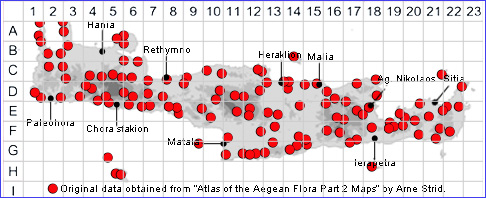SPECIES DESCRIPTION
MEDICAGO MONSPELIACA
Family and Genus:- See- LEGUMINOSAE/Subgen. TRIGONELLA
Common Names:- Star-fruited medick, star-fruited fenugreek.
Homotypic Synonyms:- Buceras monspeliaca, Falcatula monspeliaca, Telis
monspeliaca, Trigonella monspeliaca.
Meaning:- Medicago (Gr) Median-grass, A name used by the Greek physician
and botanist Dioscorides, from a Persian name for lucerne, or medick.
Monspeliaca (L) From Montpellier.
General description:- Short hairy annual
Stems:-
1) 3-15(-30) cm., few, rather stout, densely appressed-pubescent.
Leaves:-
1) Pinnately 3-foliolate, 4-10 x 3-7 mm,
a) leaflets, obovate-cuneate to rhombic, sharply dentate in the upper half.
Flowers:-
1) In subsessile umbels of 6-14 along the stem.
2) Calyx, c. 3 mm, teeth slightly longer than the tube.
3) Corolla, c. 4 mm, lemon yellow.
Fruit:-
1) Legume, 7-17 x 1-1·5 mm, pendent, linear, slightly curved upwards, usually
pubescent, with thick oblique veins.
2) Seeds, c. 1·5 mm, brown, finely tuberculate.
Key features:-
1) Stems, densely appressed-pubescent.
2) Legume, 7-17 mm, pendent, pubescent at least when young.
3) Calyx-teeth, longer than the tube.
Habitat:- Damp meadows, gravelly roadsides, dry open shrubby vegetation, olive
groves. 0-900(-1600) m.
Distribution:- Central and southern Europe, Karpathos island group. Widespread
on Crete especially around coastal areas.
Flowering time:- Mar-June.
Photo by:- Steve Lenton

